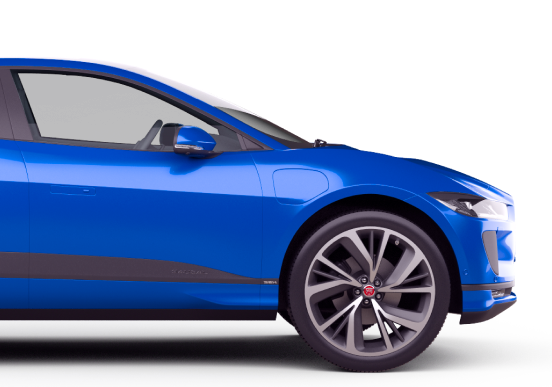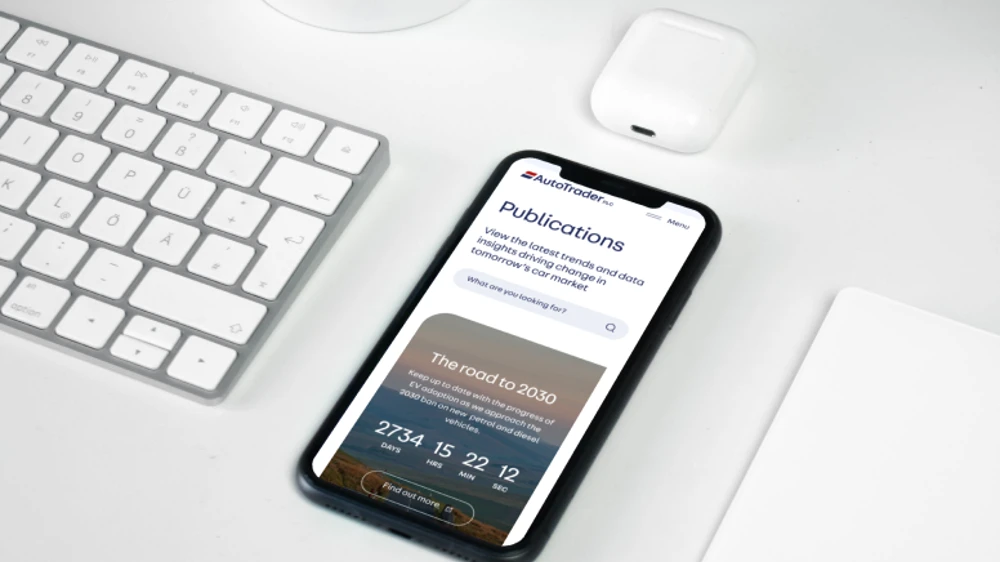Close
Back
Today’s
automotive
market
Staying ahead in a competitive market
requires constant evolution, agility and
relentless tech-led innovation.

The ecosystem
we operate in
The automotive market is complex and often
inefficient. There are multiple participants and
unsurprisingly, consumers can find the process
of buying or selling a car overwhelming.
Through Autotrader products, services and
partnerships, we aim to significantly improve
the car buying experience, as well as leverage
our existing relationships to improve more of
the value chain.
size of UK car parc
at the end of 2025

Driving change in tomorrow’s car market
We are continually adapting our onsite experience to meet
the needs of both our customers and consumers.
This is core to remaining the UK’s largest automotive
marketplace for new and used cars.
81.6 m
Cross platform visits
Monthly average visits spent across all platforms in 2025
14,013
Average retailer forecourts
advertising with Autotrader in 2025
449 k
Live car stock
Average number per month in 2025
New and used car
market dynamics
New car registrations
Over the past 12 months the new car market has grown 2% to just under two million registrations. The retail channel has remained under pressure, seeing a 4% year-on-year decline, with lower registration volumes than in our financial year 2009, after the Global Financial Crisis. This decline was more than offset by growth in the fleet segment, which accounted for nearly 60% of all registrations. The share of battery electric vehicles as a percentage of total car sales increased to 21%.
It is not yet clear how global tariffs are likely to impact the UK car market. It is possible that due to a lack of retaliatory tariffs the UK market looks relatively attractive for foreign vehicle exports. In addition, vehicles produced in the UK may be more likely to be sold in the UK, both of which could support new car volumes going forward. Offsetting this impact is the possibility that wide-ranging tariffs on vehicle components increase the price of new cars, which would push car buyers towards used car alternatives and put downward pressure on new car volumes. This would support near-term used car prices, however as we saw in 2020/2021, lower new car volumes today create used car supply challenges in the future. The government has also announced plans to soften the Zero Emission Vehicle (‘ZEV’) mandate, which should support overall registration volumes over the next two to three years.
<2.0m
new car registrations in the 12 months to March 2025,
-4% year-on-year
Used car transactions
The used car market has continued to recover from the lows of COVID-19 throughout this financial year, which we expect to continue. Demand remains strong, with cars continuing to sell faster than before the pandemic as explained on the next page. Used car supply has gradually improved and both trade and retail prices have been broadly stable throughout this year, following declines last year. There were 7.6 million used car transactions in the 12 months to March 2025, up 4% year-on-year (2024: 7.3 million). Supply has gradually improved through the year as new car registrations have grown through the fleet channel, which has in turn increased the availability of ex-fleet stock for franchise and independent customers. The growth in used car transactions is larger than our increase in live car stock on site as the speed at which cars have been sold has continued to be quicker.
Whilst supply at a market level has gradually improved, we have seen the impact of the 3 million new cars not sold during the pandemic flowing through the parc, shifting from 1-3-year-old cars to the 3-5-year-old segment of the market. In 2019 there were circa 4.8 million 3-5-year-old cars in the parc; by the end of this year, it falls to just 2.9 million, making it the lowest level on record.

Retail Price Index
Providing an overview of the latest pricing data from
our marketplace and across the retail market.

c.2,000
Deal Builder customers live in March 2025

21%
of new car registrations were electric sales during 2025
The key drivers shaping the future of our industry
The automotive industry as a whole is facing an
unprecedented wave of change, most notably in the way
people buy cars and the acceleration in the adoption of
electric vehicles. Over the next 5 to 10 years, the cars
consumers drive and the ways in which they buy, own
and use them will be dramatically reshaped.
As choices have become more complex, the demand for an omnichannel journey, that blends digital convenience and transparency with the in-person experience that only a retailer can offer, is accelerating. A ‘digital first’ mindset and the right online presence is also influencing footfall – although some consumers contact a retailer before visiting, the majority still just walk in, looking to speak to someone before finalising their purchase. Our research shows that two thirds of walk-ins don’t feel the need to make contact first, having already researched the car and retailer online.
We’re committed to bringing more of the car buying journey online through our digital retailing solutions. Our main focus has been in developing our Deal Builder product for used cars, which enables our partners to offer a seamless online buying journey from their Autotrader adverts. By the end of this financial year, there were c.2,000 retailers and c.84,000 vehicles live with the product available.
Over the past year, retailers have consistently seen more than double the sales conversion rate of deals versus traditional enquiries, as well as a significant reduction in haggling and time spent on admin, which freed-up front-line colleagues to focus on driving even more sales. It enables consumers to engage with retailers when and how it best suits them, with almost half of deals being submitted out of hours, meaning retailers would arrive at work with enquiries in their inbox. Although the initial point of contact can now happen at any time, most drivers still want to test drive before completing the deal, signalling that a mix of both digital and physical is still essential.
2024 was the year of ‘peak petrol’, which means from now on the volume of petrol cars on the UK’s roads will fall. It was also a record year for electric sales as the share of new car registrations hit 21% with volume exceeding 400,000. However, progress came at a cost in the shape of heavy discounting whilst the fleet sector accounted for three out of four EVs registered. The shift to electric is fuelling increased competition in the market, with over 62 brands expected to be in the UK market by the end of calendar year 2025, up from 45 in 2019. At a time when the industry is working hard to encourage more people to make the switch, this year will see the introduction of the Electric Car Supplement, potentially pushing brand-new EVs even further out of reach for many car buyers. Private buyers wanting to transition to electric are increasingly relying on the used market, drawn by lower resale values, competitive pricing relative to the ICE market and growing consumer choice. Since mid-2023, the used EV market has continued to grow, with consumer demand outpacing supply on retailer forecourts.
Through our unique market data and insights, and our range of products and tools, we continue to support the transition to electric among consumers, as well as all our customer and industry stakeholders, helping them to make more informed buying and selling decisions. Over the last financial year, we have invested significantly in driving consumer awareness, through both our monthly ‘EV Giveaway’ competition, and our multi-million-pound new car marketing campaign. We’re also working closely with Government, ensuring key departments have the most accurate and informed view of the progress being made on the road to electrification.
View the latest market data

To discover more about today’s automotive market, check out the latest market reports in our news & views section.
Generating value
Maintaining a robust value creation model for driving growth and succeeding in the strategic delivery of our purpose.
Read MoreOur strategy in action
Bringing together our three strategic priorities to deliver the best, data-driven digital retailing experience for our consumers and retailers.
Read More
Looking to join the team?
Looking to make a sale?
Looking to make a purchase?
Sign up to our email alerts service:
Join our news & views mailing list
or submit media-related enquiries: